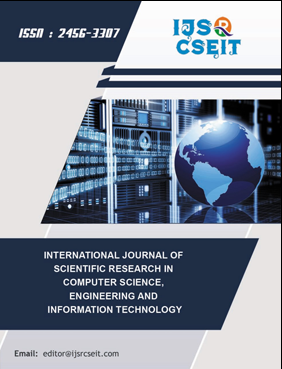Comparative Analysis of AES and RSA with Other Encryption Techniques for Secure Communication
DOI:
https://doi.org/10.32628/CSEIT2410263Keywords:
Encryption, Advanced Encryption Standard , Rivest-Shamir-Adleman, Secure Communication, Comparative Analysis, Key Management, Computational Complexity, ScalabilityAbstract
In today’s digitized era, where the whole world is interconnected and every information about individuals are collected, it is important to process and store the data such that it is safe from unauthorized access. Encryption is used to turn the plain text into cipher text which makes the data unreadable, thus maintaining its confidentiality and integrity. Among the several encryption methods available, Advanced Encryption Standard (AES) and Rivest Shamir Adleman (RSA) are popularly used due to their effectiveness and efficiency. However, alternative encryption techniques exist, each offers different level of security and performance. This study presents a thorough comparative analysis of AES and RSA alongside other encryption methods to assess their suitability for secure communication. Factors such as encryption strength, computational complexity, key management, scalability, and versatility are examined to provide a comprehensive understanding of each technique's strengths and weaknesses. By scrutinizing these aspects, this research aims to offer insights for decision-makers in selecting the most suitable encryption method tailored to specific requirements and constraints.
📊 Article Downloads
References
Daemen, J., & Rijmen, V. (2002). The design of Rijndael: AES - the Advanced Encryption Standard. Springer Science & Business Media.
Rivest, R. L., Shamir, A., & Adleman, L. M. (1978). A method for obtaining digital signatures and public-key cryptosystems. Communications of the ACM, 21(2), 120-126.
Bernstein, D. J. (2007). The ChaCha stream cipher. In New Stream Cipher Designs (pp. 90-171). Springer, Berlin, Heidelberg.
Schneier, B. (1994). Description of a new variable-length key, 64-bit block cipher (Blowfish). In Fast Software Encryption (pp. 191-204). Springer, Berlin, Heidelberg. DOI: https://doi.org/10.1007/3-540-58108-1_24
Lange, T., & Bernstein, D. J. (2006). Faster addition and doubling on elliptic curves. In Advances in Cryptology-EUROCRYPT 2006 (pp. 29-50). Springer, Berlin, Heidelberg. DOI: https://doi.org/10.1007/978-3-540-76900-2_3
Diffie, W., & Hellman, M. E. (1976). New directions in cryptography. IEEE Transactions on Information -Theory, 22(6), 644-654. DOI: https://doi.org/10.1109/TIT.1976.1055638
National Institute of Standards and Technology (NIST). (2001). FIPS PUB 197: Advanced Encryption Standard (AES). Retrieved from https://nvlpubs.nist.gov/nistpubs/FIPS/NIST.FIPS.197.pdf
National Institute of Standards and Technology (NIST). (2016). FIPS PUB 186-4: Digital Signature Standard (DSS). Retrieved from https://nvlpubs.nist.gov/nistpubs/FIPS/NIST.FIPS.186-4.pdf
Ducas, L., Durmus, A., Lepoint, T., Lyubashevsky, V., Schwabe, P., & Seiler, G. (2019). Lattice Signatures and Bimodal Gaussians. In Advances in Cryptology–CRYPTO 2019 (pp. 537-566). Springer, Cham.
National Institute of Standards and Technology (NIST). (2019). NISTIR 8105: Report on Post-Quantum Cryptography. Retrieved from https://nvlpubs.nist.gov/nistpubs/ir/2019/NIST.IR.8105.pdf
Rogaway, P. (2011). The sponge construction. In Fast Software Encryption (pp. 443-457). Springer, Berlin, Heidelberg.
Daemen, J., & Rijmen, V. (2002). The design of Rijndael: AES - the Advanced Encryption Standard. Springer Science & Business Media. DOI: https://doi.org/10.1007/978-3-662-04722-4_1
Rivest, R. L., Shamir, A., & Adleman, L. M. (1978). A method for obtaining digital signatures and public-key cryptosystems. Communications of the ACM, 21(2), 120-126. DOI: https://doi.org/10.1145/359340.359342
Morteza SaberiKamarposhti, Amirabbas Ghorbani, Mehdi Yadollahi. "A comprehensive survey on image encryption: Taxonomy, challenges, and futuredirections", Chaos, Solitons & Fractals, 2024 DOI: https://doi.org/10.1016/j.chaos.2023.114361
Downloads
Published
Issue
Section
License
Copyright (c) 2024 International Journal of Scientific Research in Computer Science, Engineering and Information Technology

This work is licensed under a Creative Commons Attribution 4.0 International License.




